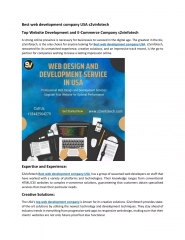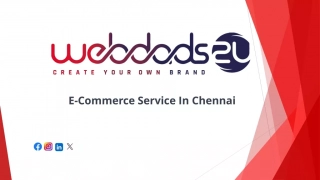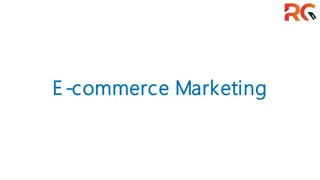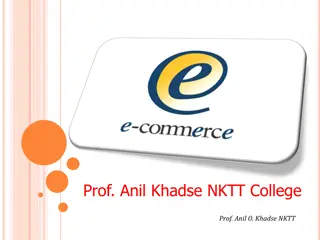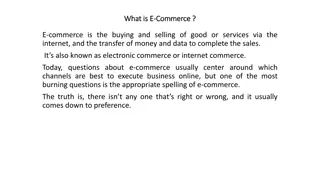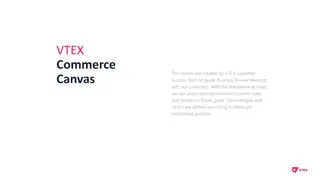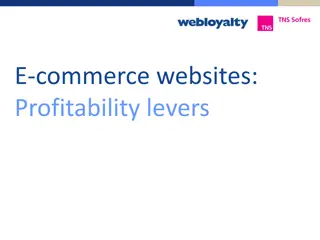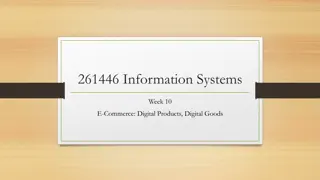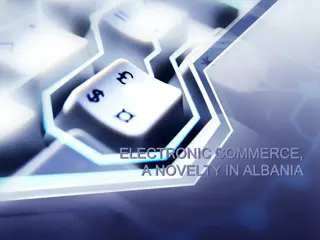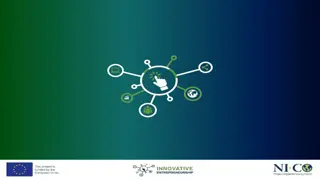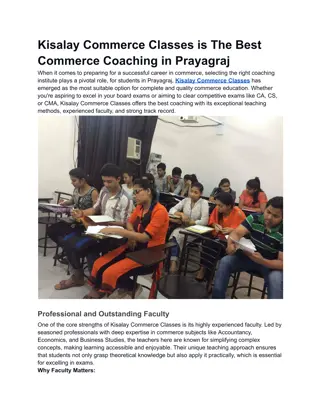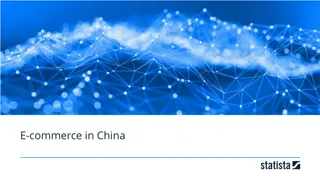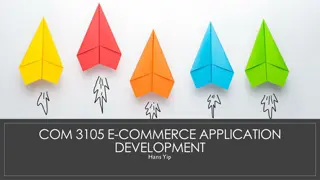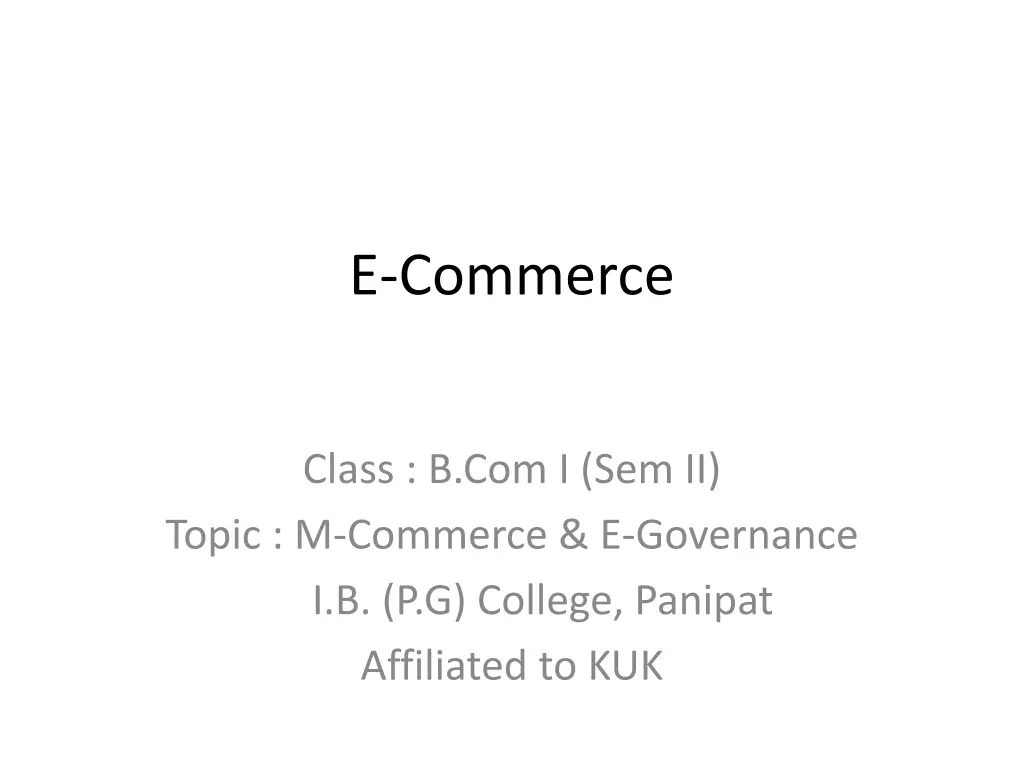
Exploring the World of M-Commerce and E-Governance in Today's Digital Age
Dive into the realm of M-Commerce (Mobile Commerce) and E-Governance (Electronic Government) in this insightful content. Discover the advantages and disadvantages of M-Commerce, explore its various applications, and delve into the innovative concept of E-Government. Uncover the power of mobile devices for conducting business transactions and learn how technology is transforming the way government services are accessed and delivered.
Download Presentation

Please find below an Image/Link to download the presentation.
The content on the website is provided AS IS for your information and personal use only. It may not be sold, licensed, or shared on other websites without obtaining consent from the author. If you encounter any issues during the download, it is possible that the publisher has removed the file from their server.
You are allowed to download the files provided on this website for personal or commercial use, subject to the condition that they are used lawfully. All files are the property of their respective owners.
The content on the website is provided AS IS for your information and personal use only. It may not be sold, licensed, or shared on other websites without obtaining consent from the author.
E N D
Presentation Transcript
E-Commerce Class : B.Com I (Sem II) Topic : M-Commerce & E-Governance I.B. (P.G) College, Panipat Affiliated to KUK
Introduction The growing demand of smart mobiles day by day, Mobiles are being used more and more on daily basis. Mobiles companies are coming up with new features for their smart phones which offers a lot of facilities like: convience ease Flexibility Security Net banking , etc M-Commerce is the term for making business transactions using mobile devices. It is the buying and sellig of goods and services through wireless handheld devices. There are already several existing M-Commerce applications and services now a days that have been very helpful to us
Advantages of M-Commerce Convience Personalisation Reducing transaction cost Location and time independent 24*7 available Can conduct transaction at any time or at ant cost Used in critical as well as emergency situation Greater flexibility Easy contectivity Time efficient Alaways at hand and easy to use.
Disadvantages of M-Commerce Small screen size Limited speed of delivery Use of graphics limited Cell phones are more commonly lost or stolen SMS limited to small numbers of characters and text Technology constraints such as memory, processing power etc. Security problems
Applications of M-Commerce Hotel booking Entertainment in the form of audio, video, games etc Online shopping Movie ticket booking Product advertisement and promotion Information regarding to news, stocks, traffic, sports etc. Information easily be delivered through mobile devices Video conferencing Train enquiry online banking Immediate information regarding current status Email sending and receiving mobile education Digital content download like e-books, music Real time map Stock market and stock trading conditions.
E-Government Electronic Government is the use of information and communication technology to run or carry on the business of the government of a country. Therefore, E-Government ia a group of people responsible for the administration and control of a country / state. It involves people like the heads of states, ministers, government etc. So Electronic substitution of a government is not possible as Government is a unit of people coming together to administer a country. Therefore it means, 1. Replacing tired old bureaucratic services lines with accessible information and services available 24 hrs a day, directly from the desktop, using powerful new technologies like digital signatures , electronic forms etc. 2. Making the process of accessing government services immediate, simple, seamless and intuitive 3. Reducing paper work within the government etc. 4. Improving service delivery to all segments of our population whether connected to internet or not
E-Governance It is the application of information and communication technologies to transform the efficiency, effectiveness, transparency and accountability of informational and transactional exchanges with in government, between govt. and govt. agencies of National , state, municipal and local levels, citizen and business and to empower citizens through access and use of information. E-Governance in developing countries does not imply: linking every citizen to a digital node or giving them access to internet and computers. E-Governance in developing countries implies: ensuring every community or a village has easy access to information available on the digital network and no one is excluded from accessing information on this network. Access to information could be through internet, cyber caf , post offices, newspaper , radio, tv etc. Objectives 1. To build an informed society 2. To bring transparency in the governing process 3. To make the government accountable 4. To reduce the cost of governance 5. To reduce the reaction time of the overnment 6. To increase government and citizen interaction 7. To encourage citizen participation
Advantages Speed Cost reduction Reduce corruption More responsible Transparency Accountability Simplify process People can involve in decision making Reduce traffic in road Revenue growths Better government and citizens relations E-Governance application a) Government to Business(G2B) b) Business to Government(B2G) c) Citizen to Government(C2G) d) Government to citizen (G2C) e) Government to Government (G2G)
Government to Business(G2B) Objectives Reduce the burden on business by enabling online tax filling. Reduce the time to fill out export forms and locate information. Reduce time for businesses to file and comply with regulations. Increase the ability for citizens and businesses to fine, view and comment on rules and regulations. Applications: 1. E-Taxation 2. E-Licensing 3. E-Tendering Business to Government(B2G) Objectives Be accredited by the government. List all the rules and regulations pertaining to the specific industry. Provide a medium for the submission of forms Application 1. E-Procurement 2. E- Workplace
Citizen to Government Objectives Provide on-line access to information and services to individuals. Should able to find what they need quickly and easily Access information in minutes or seconds instead of days or hours. Application 1) E-Democracy 2) E-Feedback Government to Citizen (G2C) Objectives It covers the services provided by the government to the citizen . Application 1) E-Citizenship 2) E- registration 3) E-transportation 4) E-Education 5) E- Health 6) E- Help 7) E- Taxation
Government to Government (G2G) Objectives Includes the relationship between central and state government Includes the relationship between two or more Government departments. Application 1) E-Administration 2) E- Police 3) E- Courts Challenges in E-Governance 1. lack of literacy and knowledge 2. security challenges 3. Poverty 4. High cost 5. Lack of qualified administration 6. Reliablity of web 7. Connectivity to backward areas 8. Frequent challenges to technology
Recent initivatives in the area of E-Governance 1. Direct cash transfer 2. Aadhar Enabled Payment System (AEPS) 3. Digital India Program 4. MyGov Citizen Portal 5. E- kranti Scheme 6. Digital cloud for every Indian Thank You

